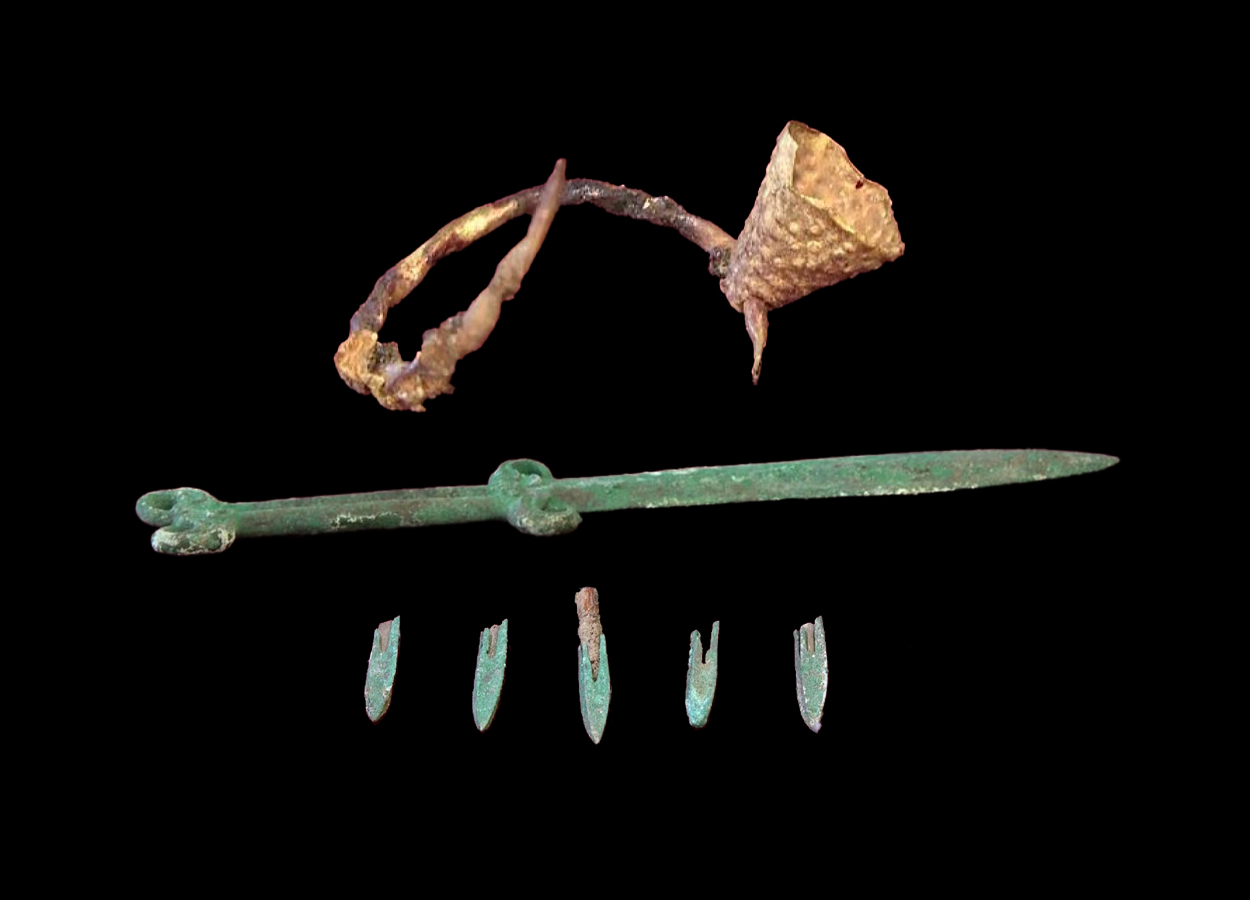Archaeologists from the Karaganda Regional History Museum have uncovered a 2,500-year-old burial during excavations at the Karabiye burial ground in the Aktogay district of Kazakhstan.
According to local reports, the tomb dates from around the 7th to 6th centuries BC during the early Saka period. The Saka were a group of nomadic Eastern Iranian peoples who lived in the Eurasian Steppe and the Tarim Basin from the 9th century BC to the 5th century AD.
The tomb was in a circular earthen embankment topped with a cap of stone slabs, beneath which archaeologists found the remains of a warrior burial along with the sword, five arrows, and an iron earring wrapped in thin gold foil.
Experts have described the sword as being a finely crafted double-bladed akinaka type, which is cast in a single piece and decorated with intricate designs of argali (sheep) horns and birds of prey.
“The expedition lasted a month. It was an archaeological team from the regional history museum. We expected to find typical remains from the Saka period, but the fact that the burial mound has been preserved in its original form is extremely rare. This provides an opportunity to see the burial rite as it was performed over two thousand years ago,” said Dauren Zhusupov.
The artefacts have been sent for metallographic, radiocarbon, and anthropological analysis to determine their precise age and cultural context.
In recent years, Central Kazakhstan has yielded several significant finds from the Saka era. In 2023, a bronze akinaka with a butterfly-shaped cross guard was uncovered in the Karkaraly district, and in 2024, archaeologists found an iron sword with a groove for blood drainage in the Taldinsky Historical and Archaeological Park.
Header Image Credit : Karaganda Regional Museum
Sources : Karaganda Regional Museum





